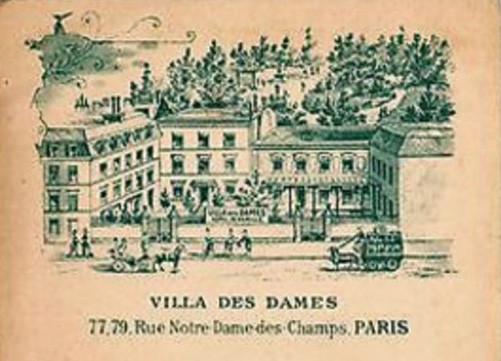Malvina Hoffman, 1885 – 1966
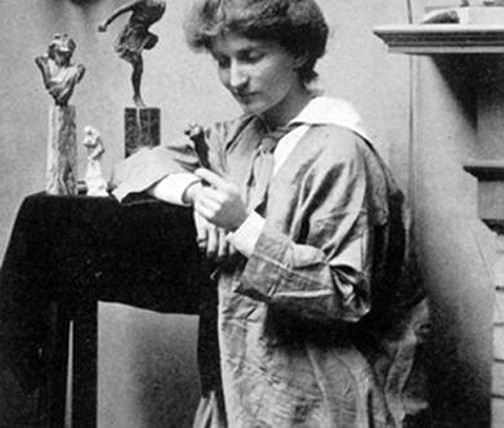
American sculptor Malvina Hoffman was born in New York in 1885. Her father, Richard Hoffman, was a concert pianist and music teacher, and her mother, Fidelia M. Lamson, came from a prominent New York family. Throughout her life, Hoffman would benefit from and develop many cultural and social resources that advanced her career as an artist. After attending several finishing schools, she studied at the Art Students League in Greenwich Village. A generous bequest from her godmother then enabled Hoffman and her mother to travel to Paris so she could study under Auguste Rodin.
She arrived in Paris in 1910 after visiting Italy, where she met fellow sculptor Janet Scudder. Hoffman and her mother first settled at the Villa des Dames at 77 rue Notre-Dame-des-Champs, described by Clive Holland as one of the best pensions in his 1904 article on "Lady Art Students' Life in Paris" (232). Hoffman expresses the joy of moving to Paris and the quaint setting of this pension in her memoir, Yesterday Is Tomorrow: A Personal History: "Now, after the long overture, the hope of years, the curtain rose on the new scenes in the City of Light-Paris. [...] [The pension] had a garden with winding paths and a heavily laden chestnut tree, in full bloom, that seemed the essence of Paris" (102).
In those early weeks in Paris, Hoffman called on Scudder several times, failing to gain access to her studio, located at 1 rue de la Grande Chaumière (Yesterday Is Tomorrow 104). She persisted and was finally received by Scudder, who introduced her to many Montparnasse luminaries:
At last, Miss Scudder let me in [...] She offered to take me to a 'soirée' at Gertrude Stein's, and there I met some of the many painters and writers who flocked about that curious personality. Miss Stein received them genially, seated like a great Buddha surrounded by worshipers. Paintings by Picasso covered the walls of the salon, and there were also many pencil and pen-and-ink drawings by Matisse so meticulously executed it made me think an etcher might have made them. I was told that Matisse had given up this kind of work and was doing free and bold line painting. [...] Janet took me for aperitifs at l'Avenue's and other Montparnasse cafes where we met more of the artistic coterie then working in Paris. Everyone was talking about the upcoming Quatre-Arts Ball. I went under protest - by no means in the gay mood of the others. They dressed me up as a court page and, so disguised, I spent a wild night dancing and drinking absinthe, singing my way home with the crowd of artists, arm in arm, winding along the Boulevard Saint-Michel. [...] In all these new experiences, much seemed familiar to me from descriptions in books, but the sounds and colors, the immediacy of Paris defied the written word; the air was charged with beauty and newness. Here was something I could never have known from writing or tales of travelers, but only from the blessed good fortune of being able to live it (Yesterday Is Tomorrow 104).
It's hard to imagine the American girls living at 4 rue de Chevreuse participating in such debauched revelry, given the strict curfews and matronly supervision meant to shield them from the bohemian ways of Montparnasse. But surely their atelier classmates would have helped them live vicariously with tales of each year's outrageous Bal des Quat'z'Arts.
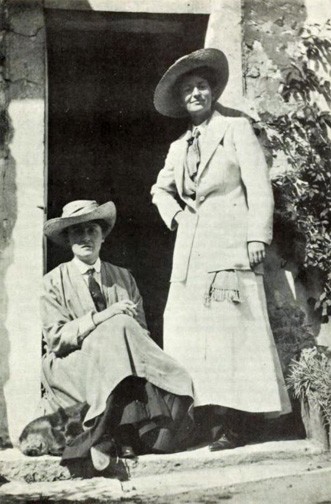
Hoffman was introduced to the Girls' Art Club through American painter and suffragist Ida Sedgwick Proper (1873-1957), one of Scudder's acquaintances. In her diary, Hoffman recorded that she "received a cold reception at the club when it was learned that she had only six months of experience drawing from plaster casts. As a twenty-four-year-old, she was uncomfortable in the role of a 'girl art student'; she saw herself as different from the other students, whom she considered to be unfriendly and to possess a superficial knowledge of art" (Kinkel 37). Even though she was invited to reside at the Club, Hoffman chose to live elsewhere in the neighborhood, but knew many of the Club's residents and benefactors.
After a brief visit to London and Belgium, Hoffman and her mother returned to Paris to their own two-room apartment on rue de la Grande Chaumière:
Our two tiny furnished rooms, only five or six doors from Janet Scudder's, looked out on a picturesque old street in which there were two well-known schools, Colarossi's and the Grande Chaumière. On Monday mornings a long line of models of all colors and nationalities filled the sidewalks leading to these two academies - colorful characters looking for all the world like the drawings of Toulouse-Lautrec, Daumier, Willette, and all the French artists one had ever seen or heard of!" (Yesterday Is Tomorrow, 108).
Scudder hired her as a studio assistant and introduced her to Frederick MacMonnies, whom they visited at Giverny. Hoffman studied at Colarossi in the evenings and worked with Scudder half days. Scudder also allowed her to use her studio until Hoffman rented her own space at 72 rue Notre-Dame-des-Champs; she and her mother then moved their residence to 17 rue Campagne-Première.
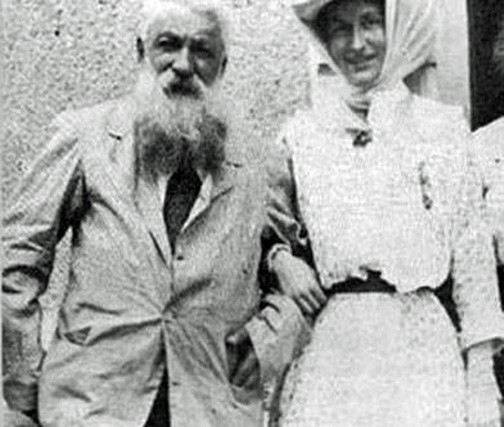
After several failed attempts, Hoffman finally met Rodin. He gave her access to his studio in Paris and also invited her to his estate in Meudon. They formed a strong mentor-disciple bond that would last until Rodin's death. He even modeled several portraits of Malvina.
Hoffman exhibited two sculptures at the Salon des Beaux Arts in 1911: a bust of her father, Richard Hoffman, and a bust of William Astor Chanler. She also exhibited her bronze, "Russian Dancers," at the 1912 Salon des Beaux Arts and in 1913, she showed a "buste en plâtre."
In the summer of 1914, Hoffman and her mother were living on the Boulevard du Montparnasse. She continued working with Rodin until September 1914, when her mother became ill and was urged to return home as World War I had commenced. Before leaving for New York, Hoffman worked with Rodin and his future wife, Rose, to catalog all of his works for the collection that would become the Musée Rodin. She even helped him hide his atelier pieces from the advancing Germans. Hoffman regularly corresponded with Rodin during (99 letters between them are preserved in the Rodin museum archives). After his death in 1917, she was asked by the Musée Rodin to help organize the original gallery installation, which she worked on for two months in 1919 (Hoffman 2018).
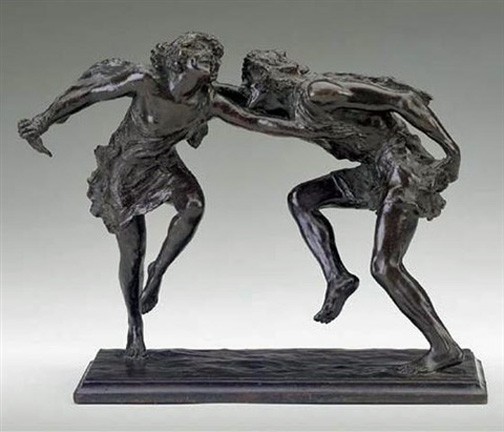
In New York, Hoffman and Ida Proper rented a studio/gallery in 1914 where they mounted an exhibition of their work (Dennison 2004, 24). Hoffman stayed in the city for the duration the war. She leveraged and pleased the elite members of her extensive social network by modeling a number of small statuettes inspired by dancer Anna Pavlova to decorate their lavish apartments (Kinkel 37). Hoffman cultivated an especially strong relationship with Mrs. E.H. Harriman, who became her patroness.
Hoffman contributed to the War effort by working with the Red Cross and raising funds for 5 canteens that served artists' families in France. Along with the association "Appui aux artistes," they managed to raise enough funds to maintain the canteens for five years, from 1915 to 1920. She also participated in the lively Alley Festa, an Italian-style street carnival held in 1917 in New York's Macdougal Alley to raise money for the Red Cross and other war charities.
In 1919, Hoffman revived her love affair with Paris, frequently casting her bronzes at the Rudier foundry, to which she had been introduced by Rodin. She even bought a house in 1927, which she named Villa Asti (25 Villa Chauvelot). Hoffman resided there on and off with her childhood friend, musician Samuel Grimson, whom she married in 1924 and divorced in 1936. She never remarried.
In 1929, when the Field Museum in Chicago commissioned her to produce sculptures on the "Living Races of Man," Hoffman began her work in Paris, selecting as models the unfortunate human beings who were forcibly exhibited at the Exposition Coloniale. She then traveled extensively around the world to execute this commission, producing 104 sculptures over a five-year period. The works were first exhibited in 1932 at the Musée d'Ethnographie at the Palais du Trocadero in Paris before their permanent installation at the Field Museum's Hall of Man in 1933.
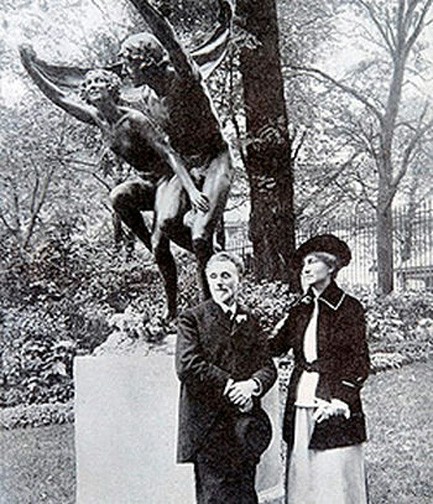
Hoffman's career spanned several decades. Some of her most iconic works depict famed Russian dancers Vaslav Nijinsky and Anna Pavlova, including a 1919 sculpture that had been installed in the Luxembourg Gardens, the first work of art by a woman artist to be displayed in the gardens. It was supposedly stolen by the Nazis during WWII and was never recovered.
In 1949, she cast a portrait bust in bronze of Dean Virginia C. Gildersleeve, which was gifted to Barnard College by Lily Murray Jones ('05), who had served as an alumnae member of the Barnard Board of Trustees from 1939 – 1943, and was formerly President of the college's alumnae Association (Barnard Alumnae Magazine, vol. 63, 14). See the painted terracotta plaster at the New York Historical Society. The bust was presented on Alumnae Day on June 2, 1949:
The day began with the presentation of a bronze bust of Dean Emeritus Gildersleeve, executed by Malvina Hoffman and given to the college by the late Lily Murray Jones ’05. One of her sons, all three of whom attended, made the presentation, to which Dean McIntosh responded for the college. Followed much circling of photographers, in which Miss Gildersleeve suffered herself to be posed with the bust, and some suppressed laments by alumnae because the bust did not resemble Miss Gildersleeve. All agreed, however, that it was a loving gift which would be cherished (Barnard Alumnae Magazine, vol. 38, 1).
Aside from her portrait busts, statuettes, and the Hall of Man figures, she also executed two monumental stone figures over Bush House in London (1925) and she created the World War II memorial for the American Memorial Cemetery in Epinal, France (1948).
Malvina Hoffman died in New York on July 19, 1966. Her papers are preserved at two archives:
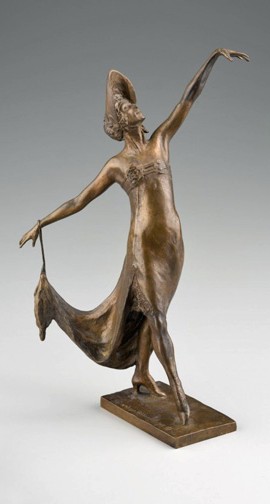
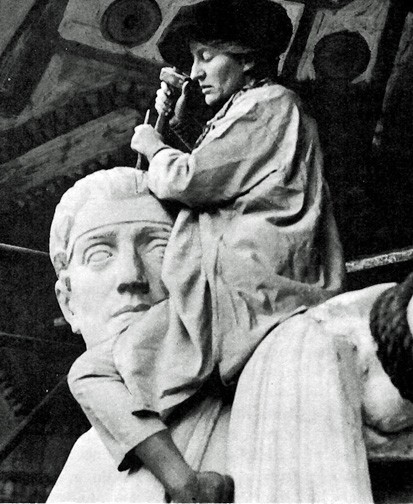
Sources
- Dennison, Mariea Caudill: “Babies for Suffrage: The Exhibition of Painting and Sculpture by Women Artists for the Benefit of the Woman Suffrage Campaign,” Woman’s Art Journal, vol. 24, no. 2, Fall 2003, pp. 24–30. JSTOR.
- Hoffman, Didi. Beautiful Bodies: The Adventures of Malvina Hoffman. Fulton Books, Inc., 2018.
- Hoffman, Didi. "About Malvina." 2018.
- Hoffman, Malvina. Sculpture Inside and Out. New York: W.W. Norton & Company, 1939.
- Hoffman, Mavina. Heads and Tales in Many Lands. New York: Charles Scribner's Sons, 1943.
- Hoffman, Malvina, Yesterday is Tomorrow: A Personal History. New York: Crown, 1965.
- Holland, Clive. “Lady Art-Students' Life in Paris.” The International Studio, vol. 30, no. 129, December 15, 1903, p. 225-233. HathiTrust.
- "June Reunion – 1949." Barnard Alumnae Magazine, volume 38 no. 5, June 1949, p. 1. Barnard digital collections.
- Kinkel, Marianne. Races of Mankind: The Sculptures of Malvina Hoffman. University of Illinois Press, 2011.
- "The New Gildersleeve Deanery is Dedicated." Barnard Alumnae Magazine, volume 63 no. 2, Winter 1974, pp. 13-14. Barnard digital collections.
- The Sculptures of Malvina Hoffman.
